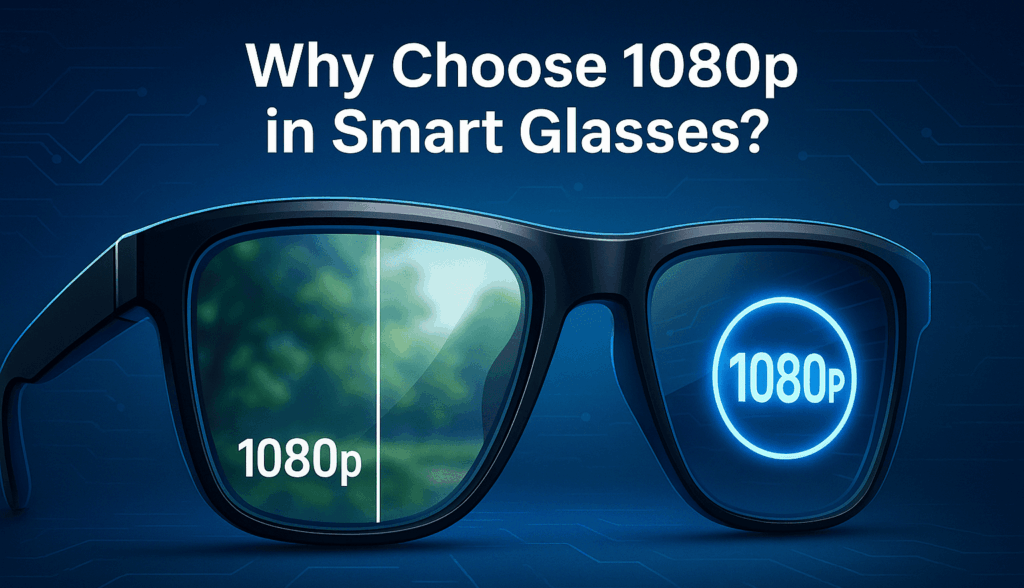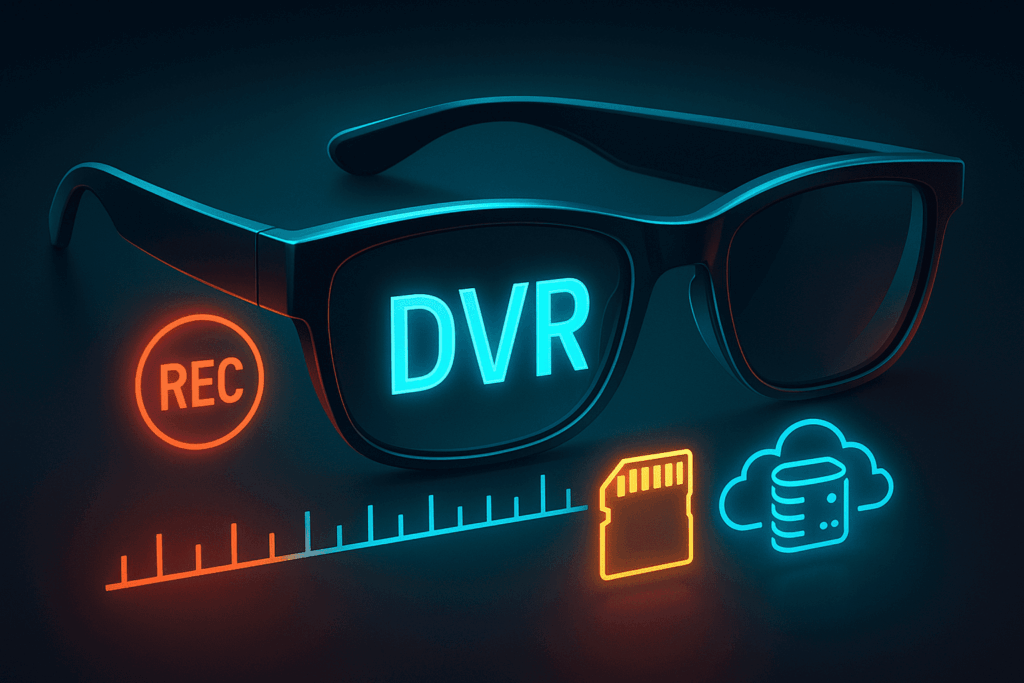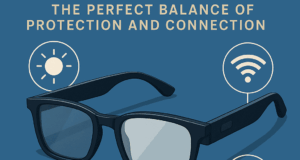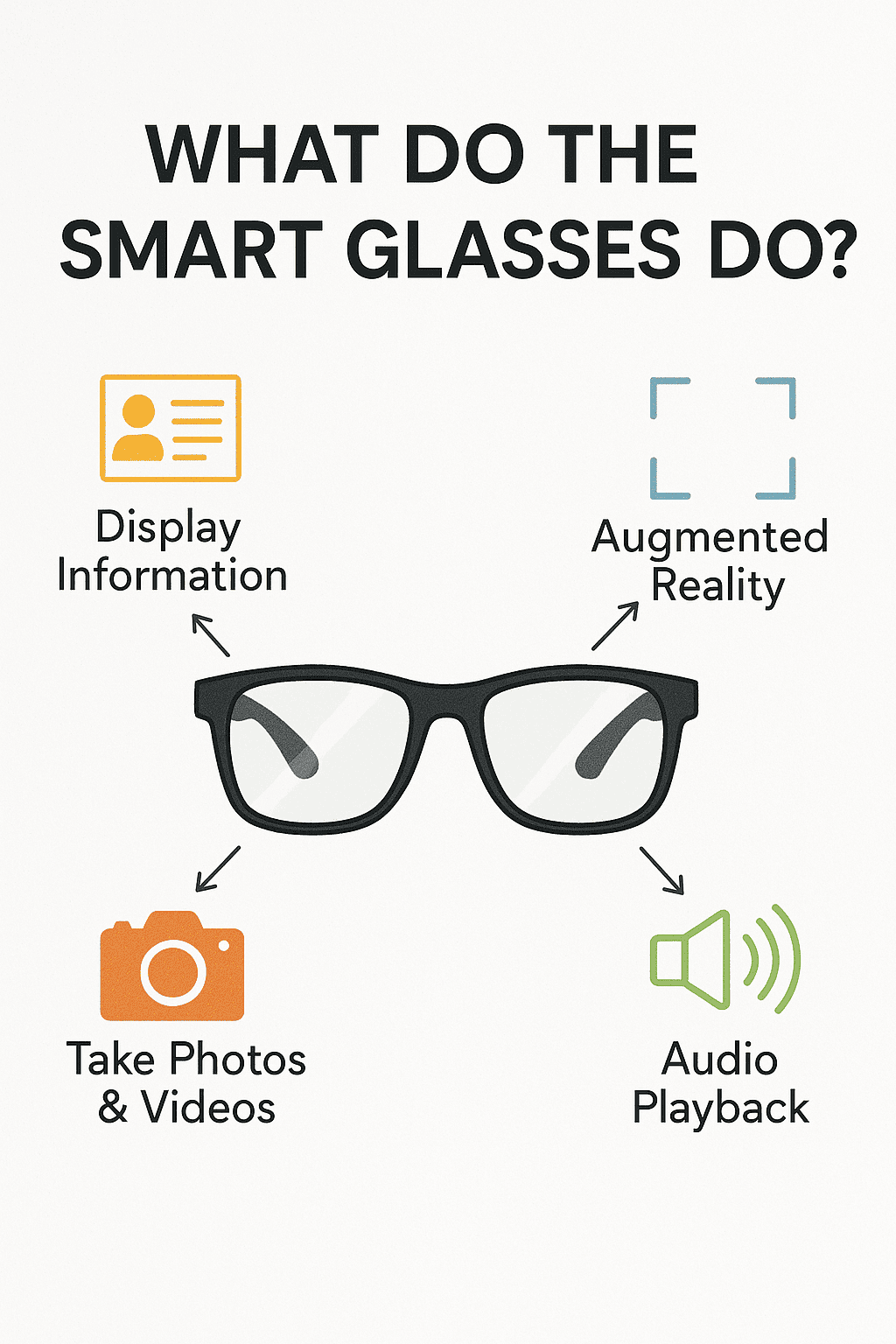In today’s rapidly digitalizing world, smart glasses have evolved beyond mere accessories, enabling you to capture every moment of your life with their powerful built‑in cameras. Models featuring a 1080p resolution camera and integrated digital video recorder (DVR) functionality deliver highly detailed, smooth, professional‑quality footage, offering a truly hands‑free experience both in everyday use and in demanding outdoor activities. From sports rides to nature hikes, from on‑site documentation to quick social media content creation, they let you record instantly without the need for a tripod or extra gear.
- What Is a Smart Glasses Camera?
- Review and Comparison
- OhO 32GB Camera Glasses, 24M Resolution 1080P Smart Glasses with UV400 Sunglasses Lens for Outdoor Sport, Unisex
- Li&Lu Sport Camera with WiFi (Model H35)
- iVue Glide 1080P HD Camera Glasses
- What format do smart glasses cameras record in?
- What happens when storage becomes full?
- In which weather conditions can I safely use smart glasses cameras?
In this review and comparison guide, we’ll take an in‑depth look at the best “1080p smart glasses camera” models on the market. We’ll assess critical criteria such as performance, battery life, storage capacity, ergonomics, and ease of use, while exploring each model’s unique features, advantages, and ideal use‑case scenarios. By the end, in this article titled “Best Smart Glasses for Recording 1080p Sunglasses Camera Review and Comparison,” you’ll have a comprehensive roadmap to choose the smart glasses that best fit your needs and expectations.
What Is a Smart Glasses Camera?
A smart glasses camera is a wearable technology that integrates a miniature video and/or still camera into a traditional eyeglass frame, enabling truly hands‑free recording and viewing. Typically, the lens and sensor assembly is embedded in the temple arms and paired with an internal processor, storage module, battery, and wireless communication (Wi‑Fi, Bluetooth). This setup lets you capture high‑resolution (e.g., 1080p) video and even live‑stream without needing a separate smartphone or action camera.
Key Components and How They Work:
- Optical Module & Sensor: A CMOS or CCD sensor captures the scene, supporting resolutions up to 1080p.
- Processor & Memory: An onboard chipset handles real‑time compression (H.264/H.265) and provides at least 8–16 GB of internal storage.
- Power Source: A compact lithium‑ion battery delivers around 1–3 hours of continuous recording per charge.
- Connectivity Options: Recorded media can be transferred via a USB‑C port or wirelessly synchronized; some models also offer live‑streaming capabilities.
Use Cases and Advantages:
- Sports & Adventure: Perfect for hands‑free, stable footage during high‑octane activities like cycling, skiing, and climbing.
- Professional Documentation: Ideal for quick field reporting in journalism, site inspections, security audits, and training videos.
- Everyday Life: Great for vlogging, social‑media content creation, and instantly capturing memorable moments.
Smart glasses cameras offer an innovative, portable media‑capture experience; when you choose a model based on ergonomic design, battery life, and recording duration, you’ll enjoy truly optimal performance.
Why Choose 1080p in Smart Glasses?

1080p (Full HD) resolution, at 1920×1080 pixels, strikes the perfect balance for smart‑glasses cameras: it delivers crisp detail in both motion‑packed and still scenes while keeping file sizes far more manageable than 4K. This means you can record for longer periods without rapidly filling up your storage, yet still capture high‑quality video. Plus, since most smartphones, computers, and streaming platforms natively support 1080p, you can share your footage immediately—no extra conversion or cropping required.
Moreover, 1080p helps conserve battery life. Higher‑resolution formats (4K and above) place heavier demands on both the sensor and processor, draining power more quickly. Full HD, by contrast, imposes a lighter workload on both the imaging and compression hardware, allowing smart glasses to shoot uninterrupted for longer stretches. In short, 1080p smart‑glasses cameras hit the sweet spot between portability, image quality, and battery endurance—delivering the most efficient performance for everyday use and professional recording alike.
What Is the Digital Video Recorder (DVR) Feature in Smart Glasses?

The Digital Video Recorder (DVR) feature is a smart recording system built directly into the frame of smart glasses, automatically saving all captured footage to the device’s internal storage. Thanks to ergonomically designed controls—virtually identical to the record button on action cameras—you can start, stop, or pause recording with a single press. Video data is processed in real time using compression codecs such as H.264 or H.265, and archived along with time‑date stamps and metadata (GPS coordinates, speed, movement direction, etc.).
Thanks to DVR, users can also enable loop (cyclic) recording to manage file sizes during long shoots: when storage fills up, the oldest clips are automatically deleted to maintain uninterrupted recording. Built‑in media playback or simultaneous wireless transfer lets you instantly view and share footage either on the glasses themselves or via a paired smart device. In sum, the DVR function offers a practical, reliable solution that hands full control of recording to the user—ideal for everything from professional documentation to rapid social‑media content creation.
Review and Comparison
The following comparison is based on our independent research of popular, highly rated smart‑glasses models on Amazon.com. We have no sponsorship relationship with any of the brands or models listed; all products were selected impartially based on user reviews and technical specifications.
OhO 32GB Camera Glasses, 24M Resolution 1080P Smart Glasses with UV400 Sunglasses Lens for Outdoor Sport, Unisex
OhO’s camera glasses come with 32 GB of built‑in storage and feature an ultra‑slim, lightweight sports design weighing just 50 g for comfortable all‑day wear. Their high‑efficiency H.265 codec sensor captures 1080p Full HD video and 24 MP photos, ensuring clear, smooth footage during any activity. A one‑touch record/start‑stop button with an LED indicator lets you continue shooting even while the glasses are charging. Integrated UV400‑protected polarized lenses guard your eyes against glare and harmful ultraviolet rays. Plus, the wide‑angle lens and shock‑resistant frame deliver reliable performance in rugged outdoor conditions.
Li&Lu Sport Camera with WiFi (Model H35)
Li&Lu Sport Camera with WiFi (Model H35) is equipped with a 1080p‑resolution CMOS sensor and an 11 mm focal‑length lens, allowing you to capture wide‑angle scenes in MP4 format for both video and 12 MP still photos. You can control recording either via the buttons on the glasses themselves or through a Wi‑Fi–enabled mobile app compatible with iOS and Android, offering flexible shooting options. The included 64 GB TF card provides ample space—expandable up to 256 GB—and media transfer is effortless thanks to both USB and Wi‑Fi connectivity.
iVue Glide 1080P HD Camera Glasses
Vue Glide 1080P HD Camera Glasses deliver an impressively lightweight design at just 46 g, featuring slim 9 mm temple arms for a barely‑there feel. Their Sony CMOS sensor records ultra‑sharp Full HD 1080p video at 30 fps—ensuring clear, vibrant footage even in low light—and lets you snap up to 24 MP still photos with a single button press during recording. With 64 GB of built‑in storage, you can store roughly 80 hours of video, and the ability to record while charging guarantees uninterrupted shooting. UV400‑polarized lenses protect your eyes, the 90° wide‑angle lens expands your field of view, and IP22 certification guards against dust and sweat—making this model ideal for extended adventures and everyday vlogging.
This guide is for informational purposes only—before making any purchase, you should conduct your own research based on your individual needs and expectations. We assume no direct responsibility or liability for any of these products.
What format do smart glasses cameras record in?
Most 1080p smart glasses cameras save footage in an MP4 container and typically use the H.264 (AVC) codec for video compression. Higher‑end models may also support H.265 (HEVC), which further reduces file sizes while preserving image quality. A few devices offer alternative formats such as AVI or MOV, but MP4 remains the most common choice and is universally compatible with modern mobile devices and platforms.
What happens when storage becomes full?
When internal storage fills up, devices generally behave in one of two ways, depending on their firmware. The first is to display a “memory full” warning and halt recording—no new footage can be captured until you manually free up space. The second, more convenient option is loop (cyclic) recording mode: the oldest files are automatically deleted to make room for new recordings, ensuring uninterrupted capture without any user intervention.
In which weather conditions can I safely use smart glasses cameras?
Smart glasses cameras carry IP ratings ranging from IP22 to IP67 to indicate their dust and water resistance. Models rated IP22–IP23 withstand light rain or sweat splashes but should not be submerged. Those with IP65 and above can endure low‑pressure water jets and dusty environments, making them suitable for demanding outdoor use. Manufacturers also specify an operating temperature range—typically –10 °C to +45 °C—so extreme heat or cold may impact performance. On sunny days, UV400‑protected lenses shield both your eyes and the camera sensor from harmful ultraviolet rays; however, in very bright conditions you may want to tweak exposure settings to maintain optimal contrast.
TAGS




